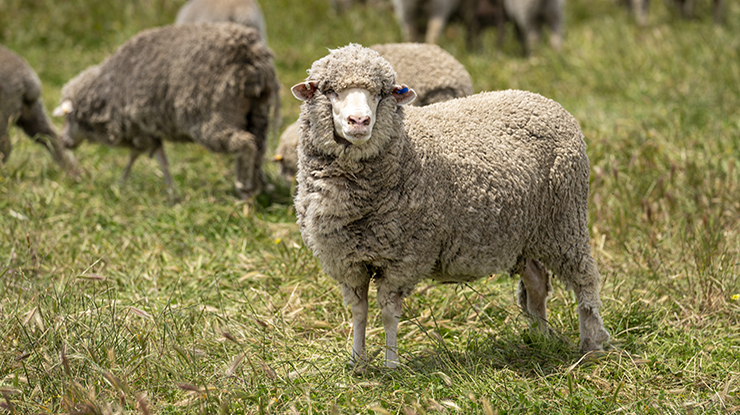
Six years ago, Steven Hobbs crunched the numbers and realised the small Merino flock he ran on his farm in Kaniva, Victoria, was compensating for losses in the cropping side of the business.
His decision to increase his focus on genetic improvement became the driver for a new business direction.
He set clear genetic objectives, made the required changes to reach these goals and tracked genetic performance moving forward.
The results have included increased liveweight in lambs, increased lambing percentage and labour saving through cleaner breeched sheep, and earlier growth and maturity.
“While a visual assessment of the ewes tells part of the story, when you know what individual animals have returned, that’s when you can get really excited about where the flock is headed,” Steve said.
Setting genetic objectives
Steve is involved in a local Lambs Alive group, run by Jason Trompf, and in late 2021 became part of an MLA Producer Demonstration Site (PDS) with Agriculture Victoria (see story opposite).
The PDS focused on demonstrating the role of breeding objectives in setting the genetic direction of a flock and testing if the genetic potential of the flock aligned with the required traits.
“I don’t expect my sheep to be the best for any one trait, but I do want them to perform well across the board,” Steve said.
He was the first of six host producers in the PDS to undertake a flock profile – created from the DNA of 20 ewe lambs randomly selected at marking, prior to applying any selection pressure.
The genetic potential of these lambs was assessed against key production traits and compared with all animals within the MERINOSELECT database – generating a report outlining flock ranking in relation to percentile bands.
Making changes
Steve has already taken action to improve his flock.
His changes included:
- a complete change to his sire battery identifying new sources of rams
- using electronic identification tags (eID) and Australian Sheep Breeding Values (ASBVs) to track progeny and better understand desired genetic traits
- swapping to variable rate stocking and culling low performers to match carrying capacity of the property during times of extreme weather.
Steve has completed testing on this year’s ewe lambs (born in 2022), which were all sired by new rams, and is pleased they’re on the right track.
“Every year since we have started, we’ve been able to see results.
“We’ve had earlier maturity, we’ve been getting up to weight quicker, we’ve refined our flock and overall, just made managing them a lot easier.
“I think I’m as excited as ever to be in the sheep industry right now.”
Improvements include:
- 15 –20% increased growth rate
- lambs are on average 10kg heavier overall
- lambs are heavier earlier
- improved profit per ewe
- reduced wrinkle and cleaner breech, with less crutching.
“We were mostly looking to increase growth and early maturity, and it looks like we’ve been able to do that,” Steve said.
“Our sheep are comparing favourably against our flock profiles and MERINOSELECT database.
“We’ll go back through all the scanning results and make a full assessment of how the singles and twins compared for each group, but based what we have already seen, I’m really happy with the results.”
Monitoring performance
When making any change, monitoring performance is critical to determining the success and impact.
For Steve, changing his ram battery could only be deemed a success if the data showed improvement for key traits.
Using eID has been a significant part of simplifying data collection, with the added benefits of reducing workload.
“The ability to pin key data points to individual animals has been one of the biggest changes to our business in recent years,” he said.
“Understanding the genetic potential of our sheep ensures that we pick the right sires going forward. Following that up by working through the data for liveweights, key times and pregnancy scanning, we can really start to test if our decisions have been the right ones.”
Looking ahead
Now he’s established the baseline genetic potential of his flock, Steve is looking to monitor changes over time and see how far he can drive genetic improvement to better meet his breeding objective.
“Thanks to the flock profile, we’ve got a good picture of where we sit.
“I’m really happy that our sheep are performing well for growth and have a good amount of fat – there is no doubt that this lines up with our ram selection choices.
“Heading forward, we can probably increase our focus on reproduction, so it will be interesting to see what sort of change we can get in that area.
Latest news






